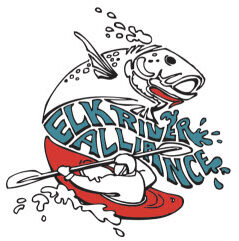Fly Fishing in Fernie
The fish & how to fish for them!
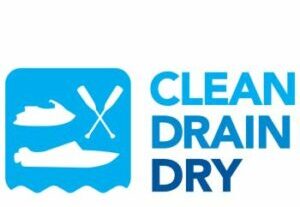
REMINDER:
Please CLEAN, DRAIN, DRY your gear
when moving between watersheds.
This means ALL GEAR including boats, waders, boots, etc.
For more information on the risk of whirling disease & other invasive species, check out the Elk River Alliance Website
Westslope Cutthroat Trout
The Elk River is renowned for its abundant supply of Westslope Cutthroat (Oncorhynchus clarkii lewisi). Arguably, cutthroat are one of the most beautiful trout species and their willingness to rise freely to a well presented dry fly makes them even more enjoyable to catch.
Conservation minded regulations on the Elk River watershed, including bait bans, single barbless hooks, spawning closures, and catch and release, have given these native cutts a chance to grow and flourish. Catch rates and average fish size have increased markedly in the last ten years.
It is not uncommon to land a cutthroat over twenty inches! Average size varies from fourteen to sixteen with a good number of fish in the eighteen inch range. Most cutthroat are caught using dry flies or attractor patterns. Our guides know the Elk River and its entomology, so they will ensure you are using the right flies and fishing the most productive waters.
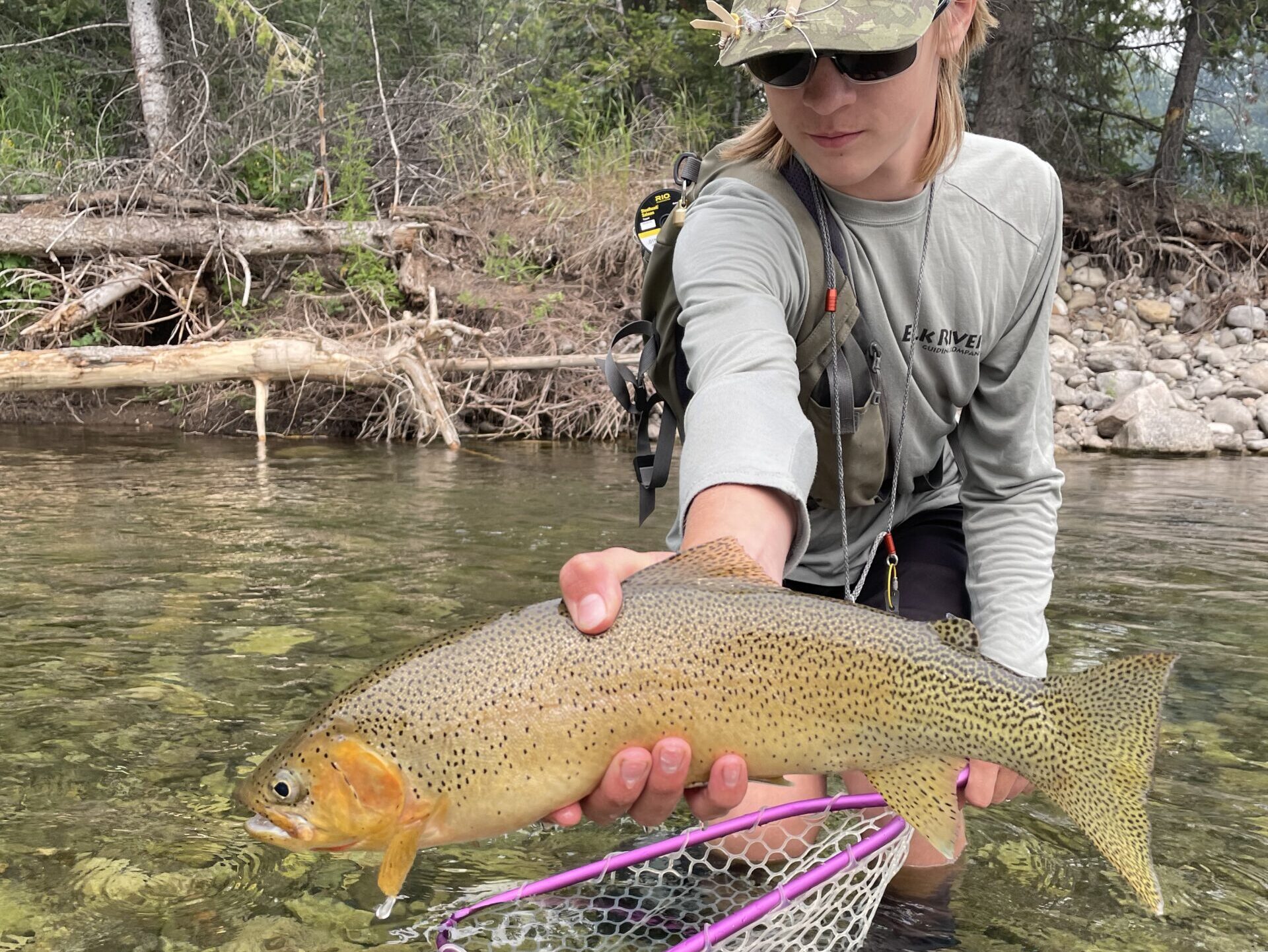
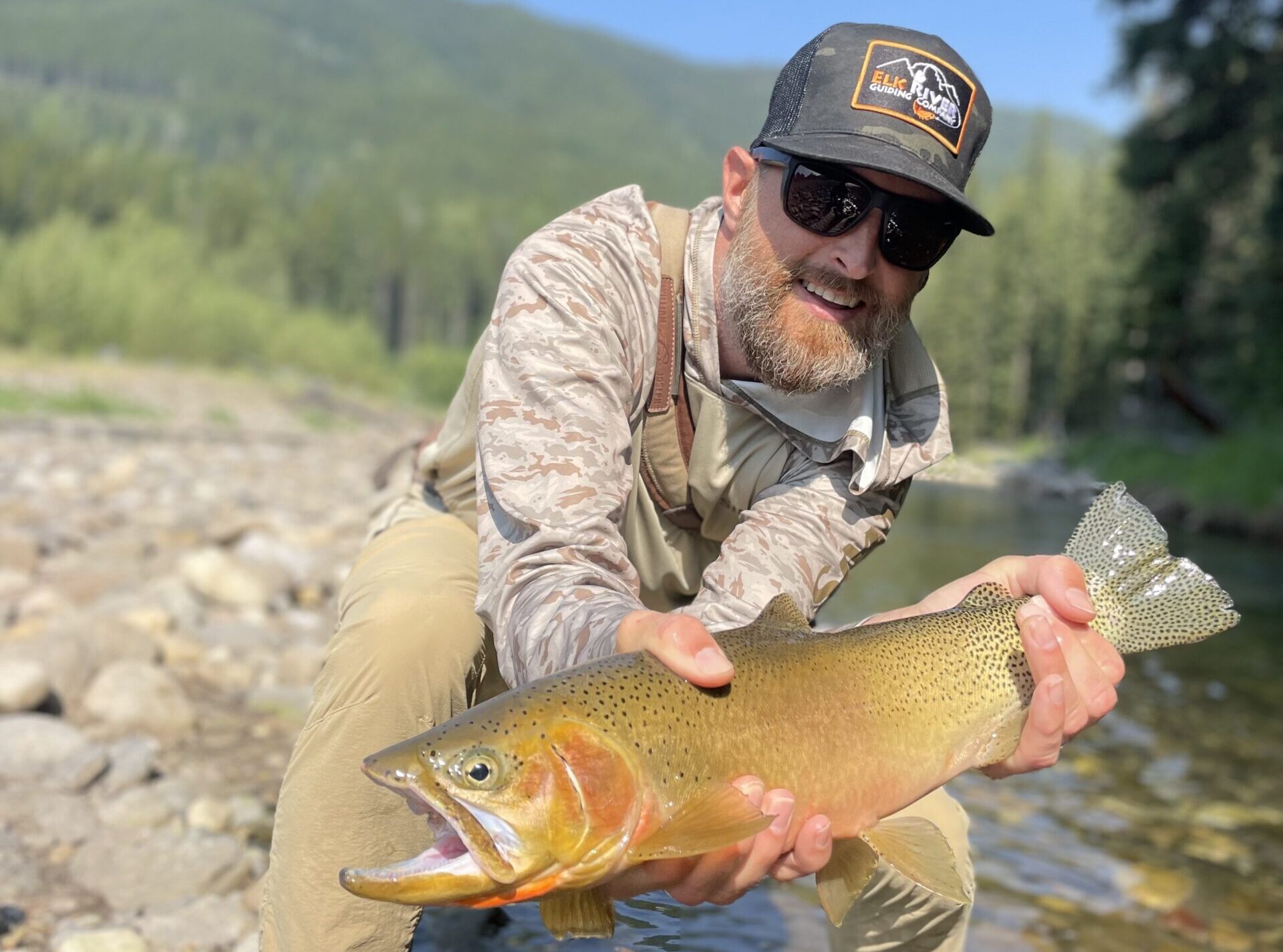
Bull Trout
The other primary species is the Bull Trout (Salvelinus confluentus). Bull trout are not actually trout, but a member of the char family. Often mistakenly identified as Dolly Varden, Bull Trout go for nymphs or streamers and occasionally dry flies. They are very aggressive and often will dart out of the darkness of a deep pool and attack a cutthroat that you have hooked up. This flurry of heart pounding excitement usually results in the bully getting your cutthroat, but it leaves the fisherman with a great fish story! This explains how they are able to obtain such large sizes. 26” to 30” bullies are not uncommon and some areas host pigs up to 40”.
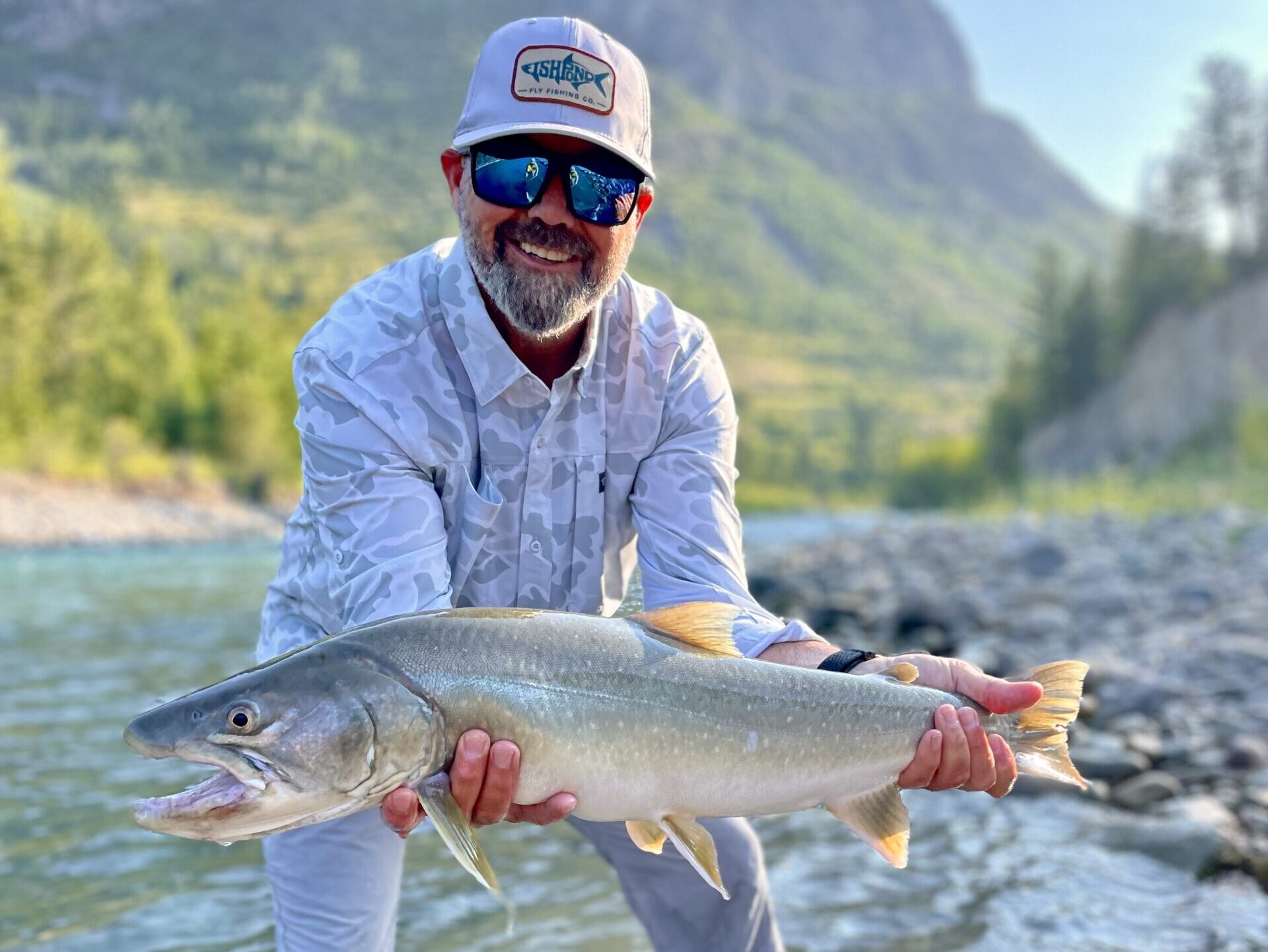
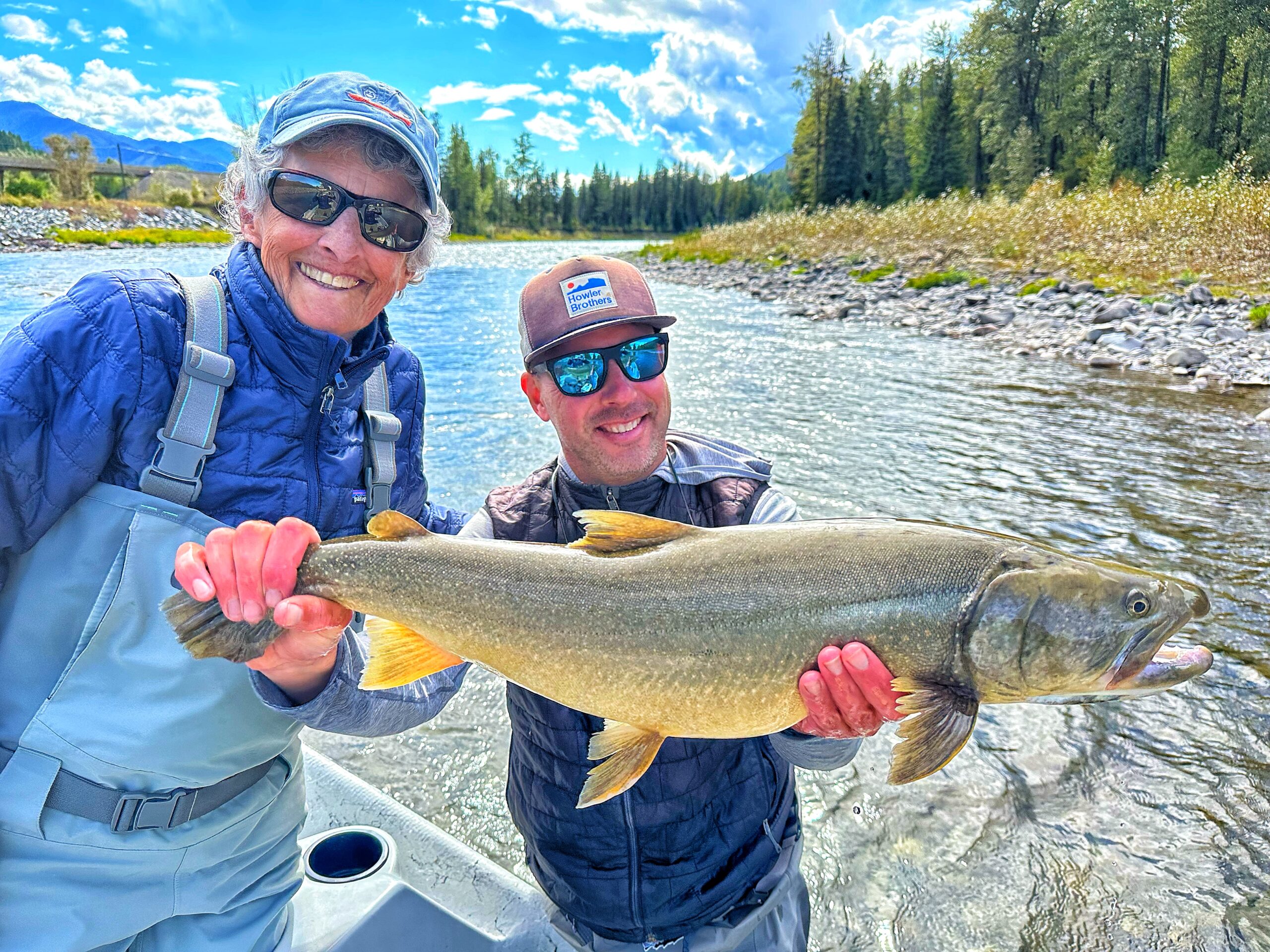
The Strategy
To Drift, or to Wade?
On most of our waters, we primarily fish from the drift boat. This proves to be a productive way to present dry flies along cut banks and runs into pools. We also use our drift boats to access parts of the river that cannot be reached wading. There are plenty of runs, log jams, and structure that warrant getting out of the boat and working sections of water by foot.
The tributaries feeding our primary rivers are fished by wading. Access to many of these smaller waters is difficult and good wading boots and a fair level of fitness is required. However, you will surely be rewarded with some exceptional fishing opportunities in some spectacular scenery. All fish caught are released even on keep zones! We feel very strongly about protecting this native fishery and the only thing taken is pictures. We also use fish friendly nets and keep the handling of the fish to a minimum. “A wild trout is too precious to be enjoyed only once”. The opportunities in the area are endless and there is no better way to maximize your success on the water than on a guided trip with us! Check out all the waters we have featured in our Rivers Section here.
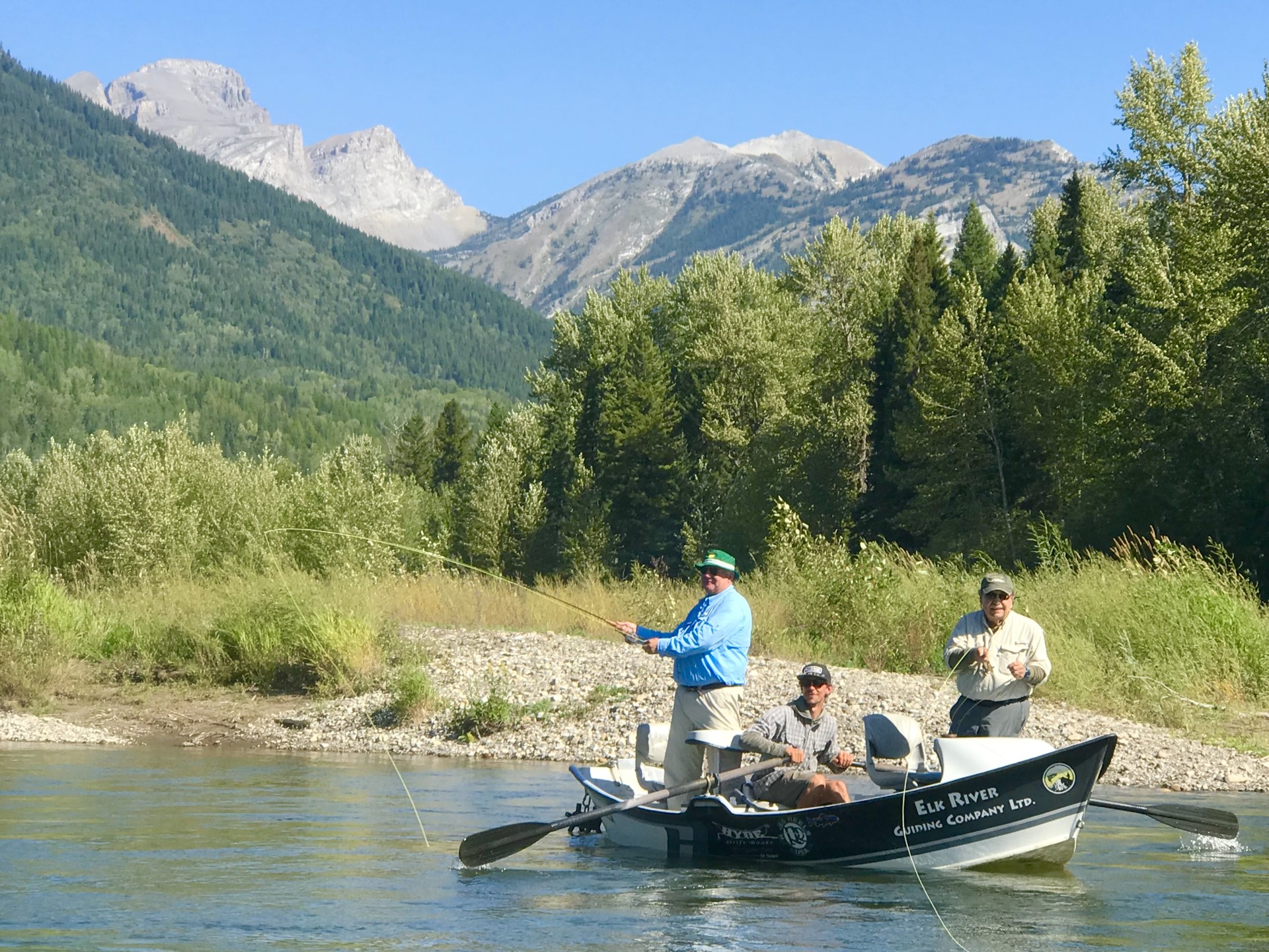
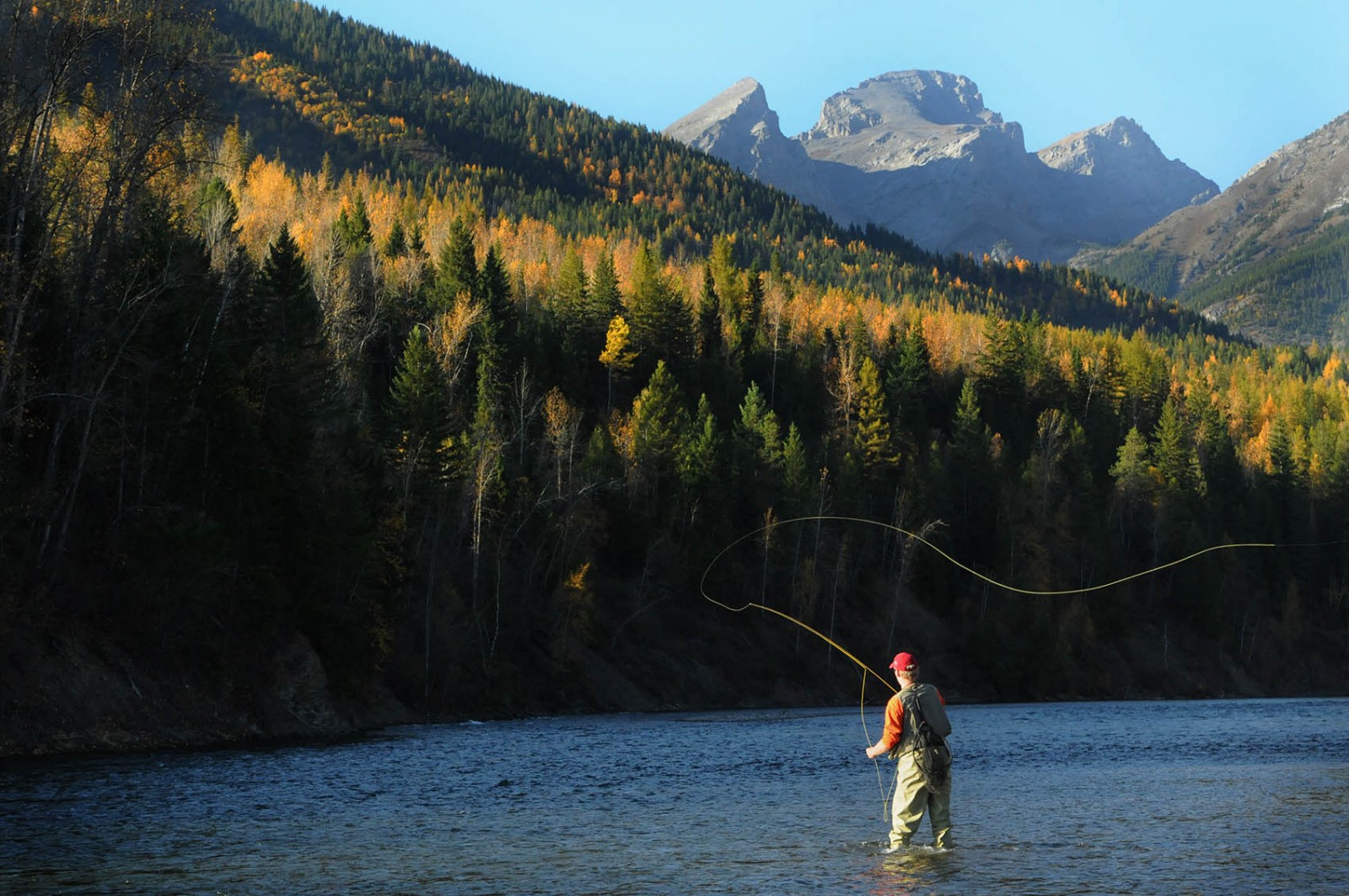
The Elk River Map
Important Things to Know:
- Some launch sites are primative and require a higher level of experience to navigate.
- Please be courteous when parking, do not block access or turn-around points.
- The Elk River has many natural hazards that can challenge even the most experienced rowers.
- Be prepared with appropriate safety gear in your water craft.
- Shuttles can be arranged at the Elk River Guiding Fly Shop.
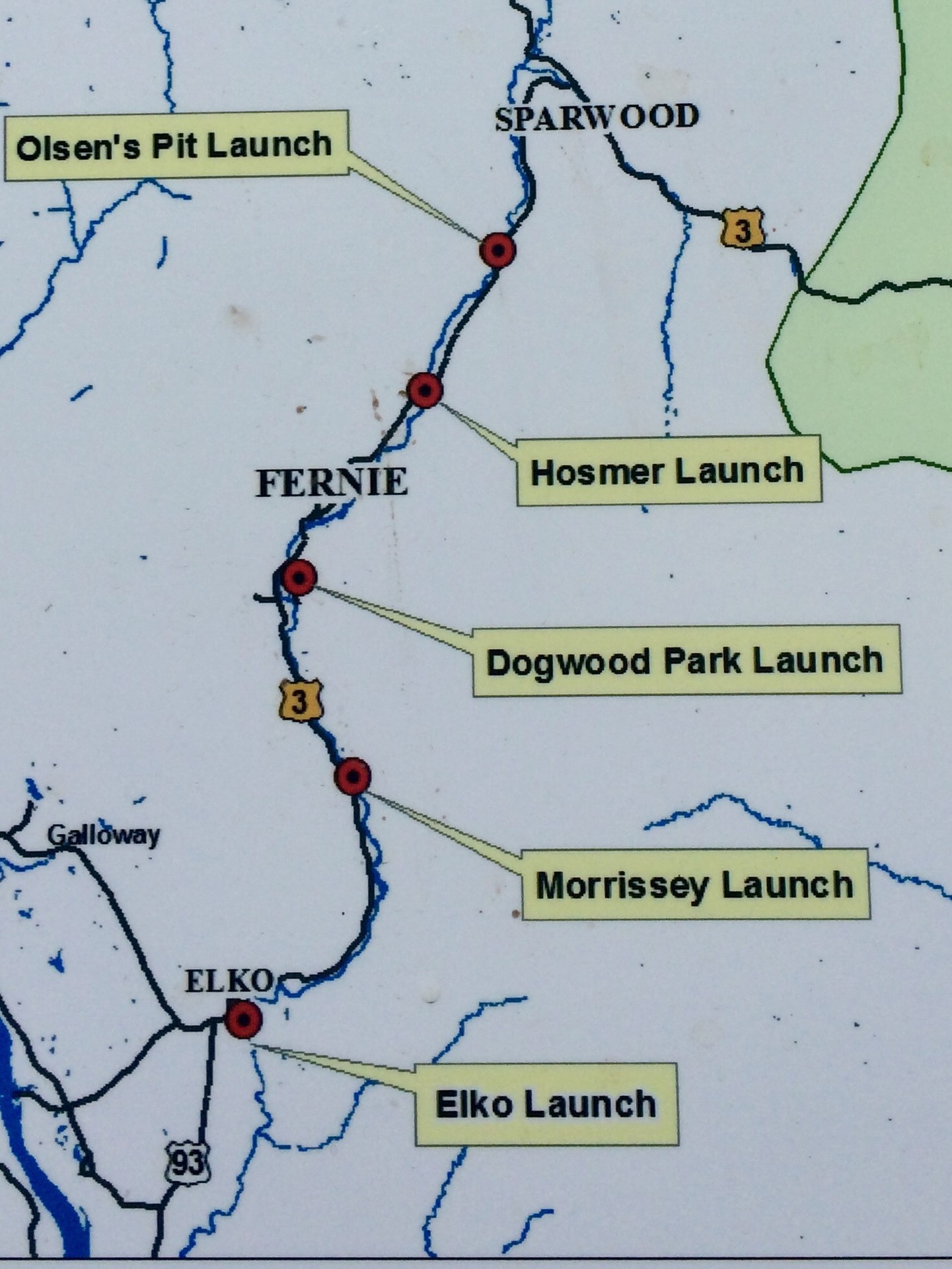
The Elk River Hatch Chart


